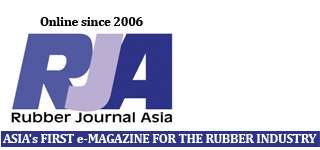Benecke-Kaliko is also able to provide optimal support to Asian customers in measuring emissions in automotive interiors. To ensure this, the surface specialist tasked its labs with analyzing the bag measuring method commonly used in Asia and examining the factors which influence the results. By developing relevant specifications and a uniform test configuration, it is now also possible to achieve comparable results using this method.
Less expense
Whereas, for example, the German Association of the Automotive Industry (VDA) test requires the pollutant concentrations to be measured in a test cabinet, in Asia the samples are usually packaged in bags and then heated in an oven. The pollutant concentration in the bag is then measured. However, it is difficult to obtain comparable test results because all the car makers have their own individual test specifications for the less expensive bag method, which differ to a greater or lesser extent from the ISO 12219-2 standard.
Benecke-Kaliko has analyzed the different specifications with regard to their influence on the result. “In the main, the same qualitative results are obtained, i.e. the same substances are identified,” says Dr. Roland Freudenmann, Global Head of Laboratories at Benecke-Kaliko, summarizing the results. “However, the quantitative results vary greatly, depending on the different test conditions.”
It’s all about the preparation
Benecke-Kaliko’s analysis showed that the preparation of the samples has the biggest influence. “The divergence here can be as much as 2,000 %,” emphasizes Freudenmann. The second parameter which has a highly significant effect on the result is the oven temperature. “The VOC emissions rise by 1,000 % and the aldehyde emissions by 300 % if an oven temperature of 80°C is specified instead of 60°C,” says Freudenmann.
The tempering period of, for instance, two hours also has to be accurately observed, because the emissions results change substantially with varying times. “A variation from oven to oven with different heating characteristics is therefore also to be expected,” Freudenmann concludes. Changes in the fill volume and different removal rates had little or no effect.
Common specification needed
Although sample conditioning has the greatest influence on the measurement result with the bag method, it is not defined at all or is only approximately defined in some specifications. “But without a definition as in the VDA 278 method – “Seal promptly after production, condition at room temperature in the test institute for seven days, then test” – very sizable scatter is to be expected with all the bag methods. A common specification would therefore be an important prerequisite for obtaining reproducible results,” is Freudenmann’s verdict. – http://www.contitech.de

